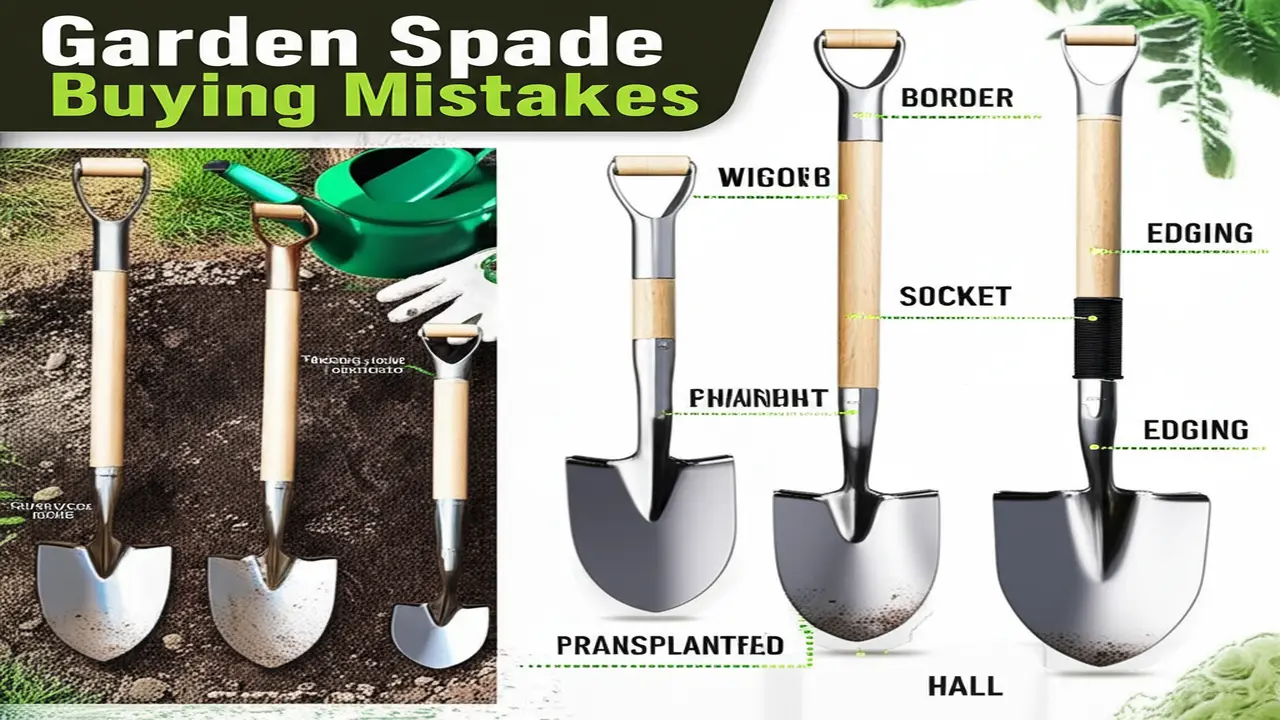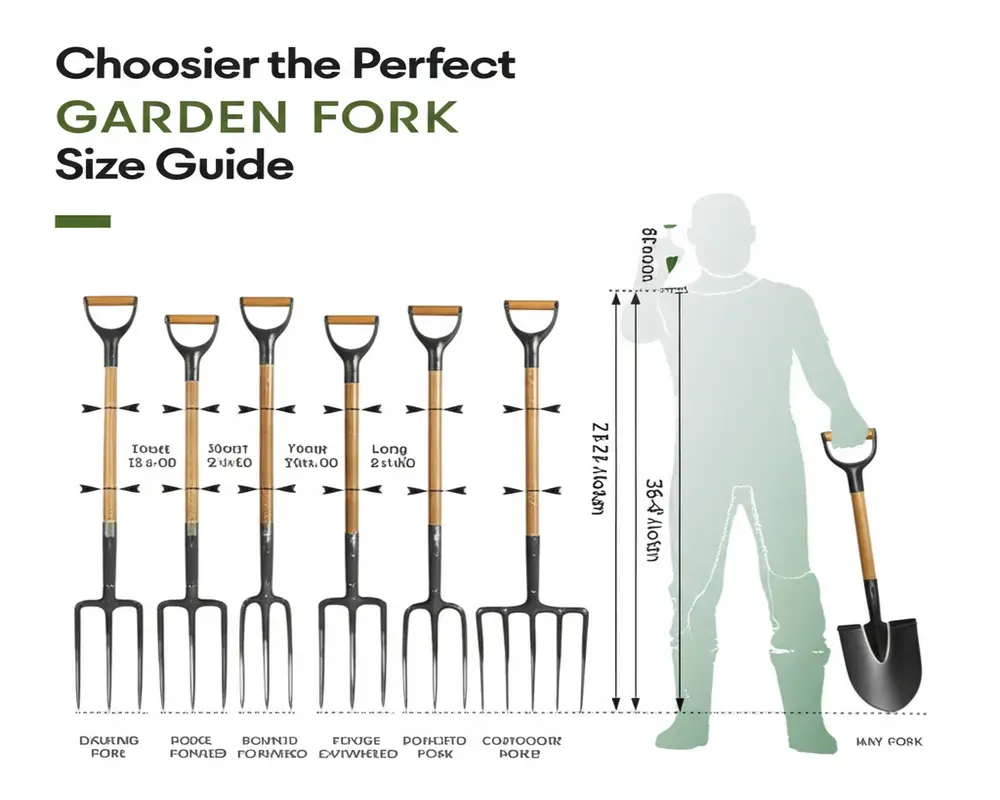Choosing the right garden fork size is essential for gardening comfort, efficiency, and injury prevention. Garden forks, while seemingly straightforward tools, vary widely in their handle lengths, tine dimensions, and weight — factors that affect your gardening experience drastically. This comprehensive garden fork size guide aims to help you select the best fork that suits your specific gardening needs and body type, ensuring you dig smarter and with less effort in 2025.
Thank you for reading this post, don't forget to subscribe!I. Understanding Garden Fork Size: Key Dimensions
The size of a garden fork encompasses several critical dimensions, primarily the handle length, fork head measurements, and the weight and balance of the tool. Each dimension plays a distinct role depending on your gardening tasks and physical stature.
A. Handle Length
Garden fork handles typically range in length, influencing leverage and comfort:
- Short handles (20-28 inches): Ideal for raised beds and close-up tasks where precise control is needed.
- Standard handles (28-32 inches): The most versatile length, suited for general garden use balancing reach and control.
- Long handles (36-48 inches): Provide better leverage for deep digging and are more comfortable for taller gardeners.
Handle shapes also affect grip quality and maneuverability: D-handle and T-handle designs offer varied control, with the straight handle best for reaching under dense soil.

B. Fork Head Dimensions
The fork head includes the tines and overall width:
Typical tine length ranges between 8 to 12 inches, which determines penetration depth into soil. The head width, generally about 7 to 8 inches, influences how much soil is lifted per pass. The number of tines is commonly four, but their shape—pointed, flat, or blunted—tailors the fork to specific soil conditions and tasks.
C. Weight and Balance
The materials of the garden fork head and handle significantly influence the tool’s weight and how well it balances during use. Options include steel, fiberglass, and wood. Well-balanced forks reduce user fatigue, offering better control between soil and user action.
II. Types of Garden Forks and Their Ideal Sizes
Different tasks require different forks designed with specific sizes and features to optimize performance.

Digging forks (also called spading forks) are robust with long or standard handles and wide heads, ideal for breaking heavy soil.
Border forks are equipped with shorter handles and narrow heads, perfect for confined spaces or raised bed gardening.
Compost forks feature long handles with long, slender tines designed to turn and aerate compost piles efficiently.
Potato or stone forks come with blunted or padded tines to harvest root vegetables carefully without damaging them.
Hay forks are less common but feature long, curved tines suited for moving bulky, lightweight materials like hay.
III. Ergonomics: Matching Garden Fork Size to Your Body
Proper ergonomics in garden fork selection plays a critical role in preventing strain and improving efficiency.

The best way to choose the correct handle length is by the “armpit test”: stand upright; the top of the handle should reach your armpit. This length promotes proper posture, reducing back strain during digging. The diameter and material of the handle also impact your grip comfort and control — a slightly thicker, non-slip grip reduces fatigue in prolonged use.
Matching fork size thoughtfully reduces injury risks, such as repetitive strain or compromised leverage, improving your gardening experience.
IV. Task and Soil Considerations for Choosing Fork Size
The soil type and specific gardening task affect which fork size you should choose.
For heavy clay or compacted soil, a long-handle digging fork made from sturdy material is advisable to gain sufficient leverage. In contrast, loamy or loose soil suits lighter digging forks with a standard handle for easier maneuvering.
Raised beds and container gardening benefit from border forks with short handles and narrow heads, enabling precise work in tight confines. Compost turning calls for specialized compost forks with long handles and slender tines for thorough mixing.
Harvesting root vegetables requires a potato fork with blunted tines to protect the crop during extraction.
V. Beyond Size: Material and Quality Essentials
The quality of materials and construction is as important as size in selecting a long-lasting garden fork.
Head materials include forged carbon steel, stainless steel, and cast steel, each offering a balance between durability and corrosion resistance.
For handles, choices like ash wood offer natural shock absorption, fiberglass brings lightweight strength, and steel ensures maximum robustness. Construction details such as forged heads versus welded tines and the type of socket joint reflect on fork durability.
Consider price against long-term value; investing in a quality garden fork pays off with years of reliable use. Look into brand reputations and adherence to quality standards for reassurance.
VI. Practical Tips for Testing and Buying Your Garden Fork
When shopping for a garden fork, try these simple tests to find the optimal fit for you:
- The “stand-up” armpit test validates proper handle length for your height.
- The “swing” test assesses the fork’s balance and comfort during motion.
- Evaluate your physical strength and avoid overly heavy forks that may tire you prematurely.
- Thoroughly read product specifications to confirm handle length, head size, and materials.
- Put comfort first — it’s better to select a slightly more expensive fork if it reduces strain and improves your efficiency.
VII. Common Mistakes to Avoid When Choosing a Garden Fork
Avoid these pitfalls to ensure your garden fork serves you well:
- Don’t prioritize price or appearance over a fork that fits your body and needs.
- Never ignore your personal height and strength when selecting handle length and tool weight.
- Consider soil conditions and the specific gardening tasks ahead; one fork won’t fit all purposes.
- Do not skimp on quality materials and sturdy construction.
- Avoid expecting one size and design to perform flawlessly across varied gardening duties.
Conclusion
Choosing the ideal garden fork requires balancing size, type, and ergonomic suitability. The best fork for your garden aligns with your height, soil, and specific tasks to maximize comfort and productivity. Investing time to select wisely will reward you with a reliable tool for years of gardening success.
Dig smarter in 2025 by embracing this expert garden fork size guide and make your gardening tasks easier and more enjoyable.
For more expert gardening tool insights and reviews, explore our detailed resources such as Ergonomic Garden Spades and Best Garden Spades.
Frequently Asked Questions
What is the best garden fork size for tall gardeners?
Tall gardeners benefit from garden forks with long handles measuring 36 to 48 inches, allowing upright posture and better leverage during digging.
Can one garden fork suit all gardening tasks?
No, different garden tasks require specific forks — for example, heavy digging needs a robust digging fork, while harvesting root vegetables calls for a potato fork with blunted tines.
How important is the weight of a garden fork?
Weight affects fatigue and control. Lightweight materials like fiberglass reduce strain, but the fork must still be sturdy enough for the task.
Does the shape of the handle affect tool performance?
Yes, D-handles and T-handles offer different grips and levels of control, impacting how comfortable and effective the fork is during use.
Where can I find reliable reviews for garden forks?
Visit expert gardening sites such as GardenItemReviews for trusted reviews and buying guides based on hands-on testing.

